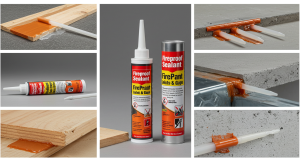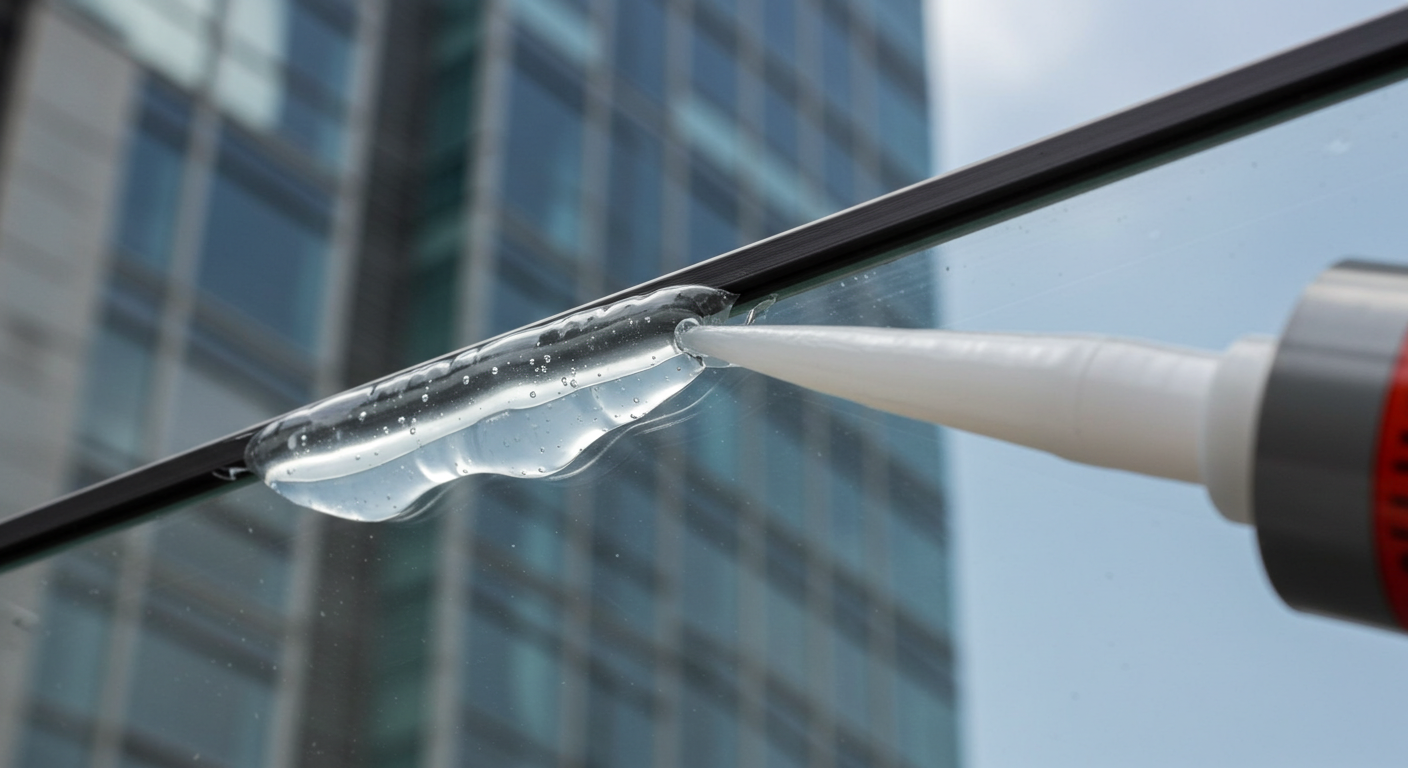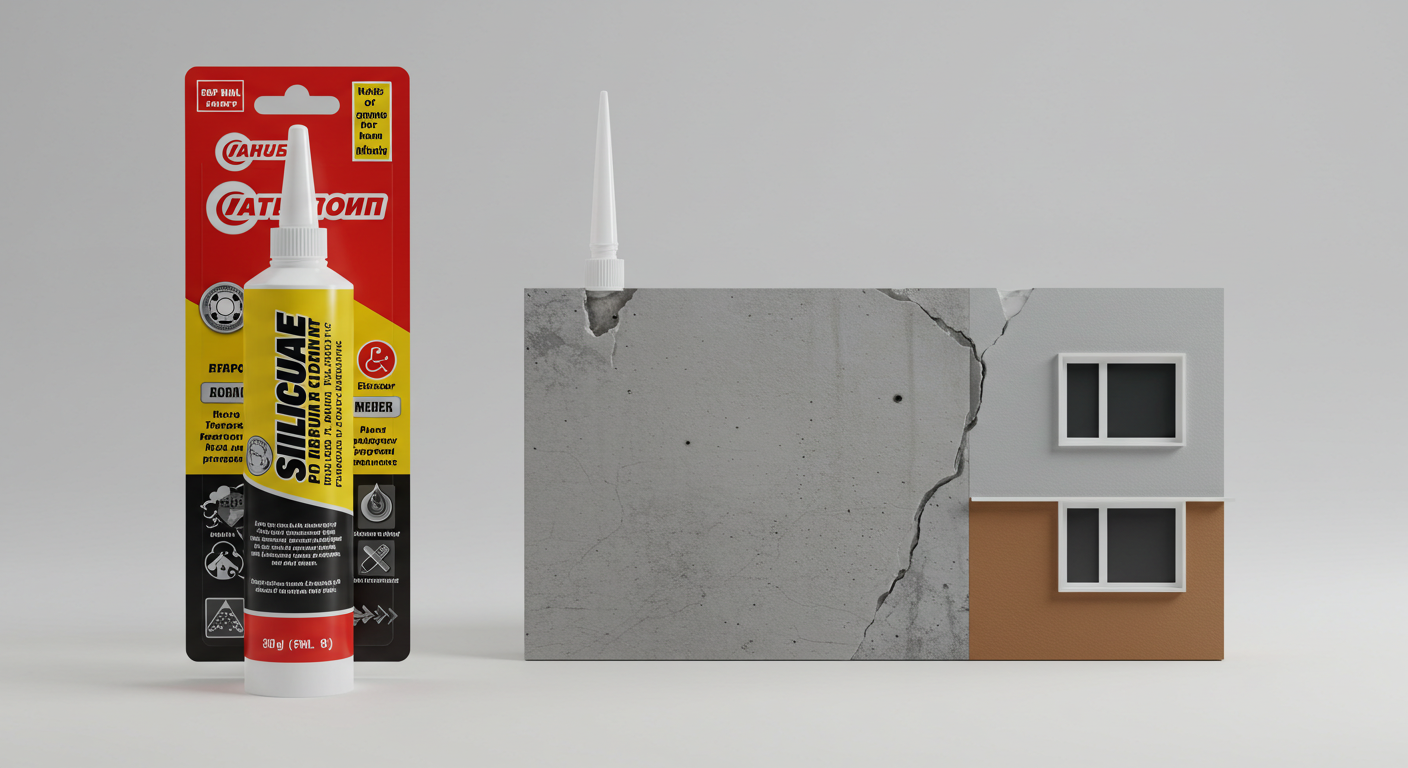Fireproof Sealant for Joints and Gaps: The Ultimate Guide for Safety and Durability
2025-02-01

Introduction: Why Fireproof Sealants Matter
Imagine this: you’re in a commercial building, and suddenly, a fire alarm blares. In situations like this, the last thing anyone thinks about is the sealant holding the building’s joints together. But fireproof sealants could be the unsung heroes that buy people precious time to evacuate safely and minimize structural damage. These specialized sealants serve as an integral part of fire safety systems, creating barriers that slow down fire and smoke from spreading.
When applied to joints, gaps, and seams, they play a crucial role in containing fire and preventing its rapid spread. This extra layer of protection buys valuable minutes, which can make the difference between a minor incident and a major disaster. Whether you’re retrofitting an older building or working on new construction, understanding fireproof sealants can make a significant difference in building safety and compliance with local fire regulations.
In this blog, we’ll explore what makes fireproof sealants unique, their advantages over standard sealants, key areas of application, and practical tips for choosing the best product for your needs. We’ll also highlight essential comparisons in an easy-to-digest table and share insights from credible resources. Let’s dive into the world of fire protection and see how fireproof sealants fit into the bigger picture of safety and security.
What is a Fireproof Sealant?
A fireproof sealant is a specially formulated material designed to prevent the spread of fire and smoke through joints, gaps, and seams in a building. Unlike standard sealants, which primarily block moisture or air, fireproof versions are heat-resistant and often tested to meet strict fire-safety regulations. These products are specifically formulated to withstand extreme temperatures, maintaining their integrity even during prolonged exposure to flames.
Most fireproof sealants consist of intumescent materials. When exposed to high heat, they expand to create an insulating barrier that slows the fire’s spread. This protective feature makes them essential in fire-rated assemblies, including walls, ceilings, and floors. They also act as effective smoke barriers, preventing toxic gases from seeping into escape routes and occupied spaces during emergencies.
How Do Fireproof Sealants Compare to Traditional Sealants?
While both fireproof and traditional sealants are used to fill joints and gaps, their performance in a fire emergency sets them apart.
| Feature | Fireproof Sealant | Traditional Sealant |
|---|---|---|
| Heat Resistance | Withstands extreme temperatures | Limited heat resistance |
| Expansion Property | Expands under high heat to create a protective barrier | No expansion properties |
| Purpose | Fire containment, smoke blocking | Moisture, air, and dust sealing |
| Application Areas | Fire-rated walls, ceilings, and structural gaps | Bathrooms, kitchens, and general construction |
| Longevity | Long-lasting and resistant to fire degradation | Susceptible to damage under high heat |
By using fireproof sealants, you protect not only the structural integrity of a building but also the lives of its occupants by limiting the spread of flames and smoke. These sealants are crucial for achieving compliance with building codes and fire-safety standards.
Where to Use Fireproof Sealants
Fireproof sealants are critical in any area where fire containment is necessary. They are commonly found in both residential and commercial buildings.
Fire-Rated Walls and Ceilings
Walls and ceilings in fire-rated assemblies often have joints that need sealing. Without proper fireproofing, these gaps can act as pathways for fire and smoke, compromising the overall safety of the structure. Properly sealed joints maintain the fire rating of the assembly, helping to confine fires within designated compartments.
Mechanical and Electrical Penetrations
Buildings have numerous penetrations for pipes, electrical wiring, and ducts. These openings pose significant risks if left unsealed. Fireproof sealants effectively fill these gaps and help maintain the fire rating of walls and ceilings. When properly applied, they prevent fire from traveling through utility channels, a common weak point in many buildings.
Expansion Joints
Expansion joints are necessary to accommodate building movement, but they can also create vulnerabilities during a fire. Applying fireproof sealant ensures that these gaps do not contribute to fire spread. Since expansion joints are designed to shift as buildings settle or react to temperature changes, flexible fireproof sealants are ideal for these locations.
Doors and Windows
Even fire-rated doors and windows require the right sealant to maintain their performance. Fireproof sealants around frames help prevent flames and smoke from traveling between rooms, enhancing the compartmentalization strategy used in fire-resistant construction. Sealing these areas also improves energy efficiency by reducing drafts.
Key Properties to Look for in a Fireproof Sealant
When choosing the right fireproof sealant, several factors determine its effectiveness.
Fire Rating
Fireproof sealants come with different fire ratings, typically expressed in hours (e.g., one-hour or two-hour fire resistance). These ratings indicate how long the sealant can withstand exposure to high heat without failing. Consider the specific requirements of your project when selecting a sealant. Some projects may require higher ratings for critical areas such as stairwells or mechanical rooms.
Intumescent Capabilities
Sealants with intumescent properties expand when exposed to heat, providing an additional layer of protection. This expansion helps block the passage of fire and smoke through joints and gaps. In scenarios where high temperatures rapidly escalate, intumescent sealants can prevent catastrophic breaches in fire-rated assemblies.
Flexibility and Adhesion
The sealant should be flexible enough to accommodate building movement and adhere well to different surfaces, including concrete, metal, and gypsum. Flexibility ensures the sealant remains effective even in areas with frequent temperature fluctuations or seismic activity.
Chemical Resistance
In some industrial applications, chemical exposure is common. Opt for fireproof sealants that are resistant to chemicals to ensure they maintain their integrity under such conditions. This is especially important in manufacturing plants, laboratories, and facilities handling hazardous materials.
Comparing Different Types of Fireproof Sealants
Not all fireproof sealants are the same. Below are common types and their applications:
Acrylic Fireproof Sealants
Acrylic-based sealants are cost-effective and provide excellent fire resistance. They are commonly used in joints with limited movement, such as wall joints and gaps around windows. However, they may not perform well in highly dynamic applications. They are easy to apply and provide a smooth finish, making them ideal for aesthetic considerations.
Intumescent Silicone Sealants
These sealants are highly flexible and ideal for areas where movement is expected. Intumescent silicone sealants work well around pipes and expansion joints and can withstand both fire exposure and extreme environmental conditions. Their elasticity makes them perfect for areas subject to thermal expansion and contraction.
Polyurethane-Based Sealants
Polyurethane fireproof sealants offer robust adhesion and are suitable for both indoor and outdoor applications. They are known for their durability, making them a preferred choice for construction projects. They can bond well with various substrates, ensuring a long-lasting seal.
Practical Tips for Applying Fireproof Sealants
To ensure maximum protection, it’s essential to follow best practices during the application process.
Prepare the Surface
Clean and dry the area where the sealant will be applied. Remove any dust, dirt, or grease to ensure proper adhesion. Use a wire brush or vacuum if necessary. Surface preparation is crucial for long-lasting adhesion and optimal fire performance.
Use the Right Tools
Depending on the type of sealant, you may need a caulking gun, spatula, or putty knife. Follow the manufacturer’s instructions regarding the tools and methods required. Using the correct tools ensures uniform application and reduces waste.
Apply Evenly and Consistently
Apply the sealant in a continuous, even bead along the joint or gap. Avoid applying too much at once, as this can lead to uneven curing. Consistent application ensures there are no weak spots where fire could penetrate.
Follow Curing Guidelines
Fireproof sealants require a specific curing time to reach their full effectiveness. Refer to the product guidelines to determine how long you should wait before exposing the sealant to fire conditions. Improper curing can compromise performance.
Real-World Applications and Case Studies
Many industries rely on fireproof sealants to enhance safety. Here are some examples:
- Hospital Construction: Hospitals use fireproof sealants to protect critical areas, including operating rooms, patient rooms, and emergency exits. Fireproofing these spaces ensures patient safety and regulatory compliance.
- Industrial Plants: Factories and warehouses often have numerous penetrations for machinery, wiring, and pipes. Fireproof sealants help contain potential fires in one section, preventing them from spreading throughout the facility.
- High-Rise Buildings: Skyscrapers have strict fire safety requirements due to their vertical nature. Fireproof sealants are applied extensively to maintain compartmentalization and protect escape routes.
- Data Centers: These facilities house expensive and sensitive equipment. Fireproof sealants protect server rooms from fire and smoke, minimizing the risk of costly downtime.
Conclusion: A Small Step for Big Protection
Fireproof sealant may seem like a small detail, but it can make a huge difference in your home’s overall fire safety. By carefully choosing the right type of sealant, applying it correctly, and sealing those vulnerable areas, you’re taking a proactive step toward protecting your home. Whether you’re dealing with gaps around windows, doors, or pipes, this simple solution can be a game-changer in keeping your home safe from the devastating effects of fire.




